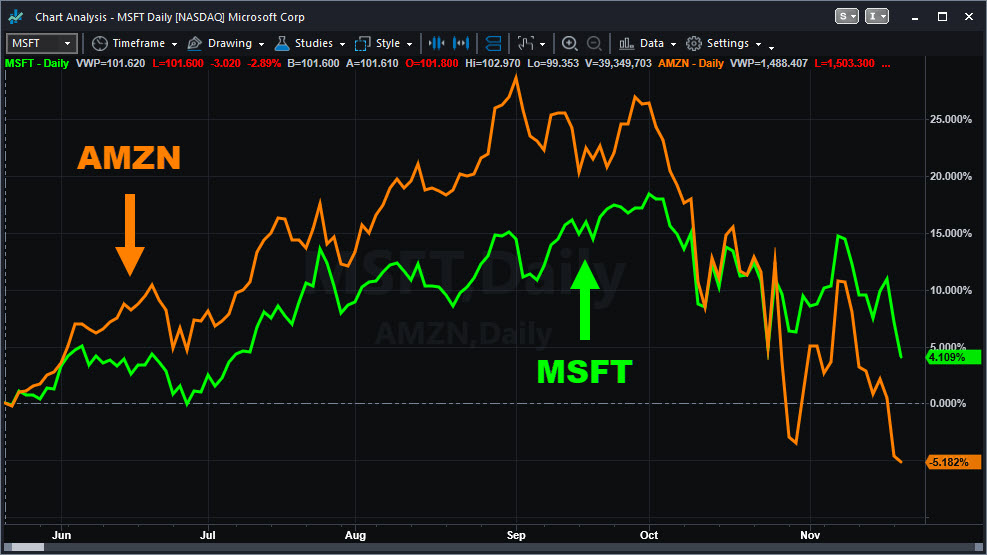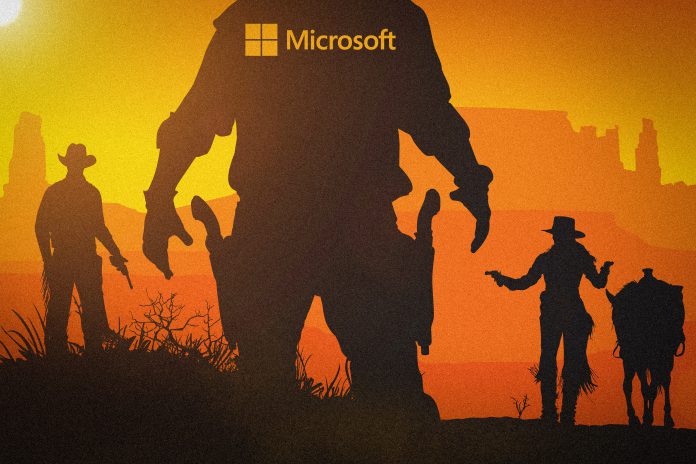The world of technology is all about disruption, and now a fight is brewing in the cloud.
Microsoft (MSFT) is making serious efforts to enter the world of “cloud computing,” the business of large companies using third-party servers and software instead of running their own data centers. It’s a broad shift that’s been occurring in the world of tech for most of the decade.
Amazon.com’s (AMZN) AWS was the first mover and has taken the lion’s share so far. But now a battle is heating up as MSFT shifts from its traditional niche on the desktop into the cloud.
Its Azure cloud-computing platform grew 76 percent last quarter, compared with an increase of just 46 percent at AWS. The Redmond, Washington-based owner of Windows, Office and Xbox has also chalked up some noteworthy product wins and accolades in recent months.
For example on November 9, clothing chain Gap (GPS) signed a five-year deal with Azure rather than AWS. It followed a pattern of retailers avoiding AMZN, an arch competitor in countless merchandise categories. That creates the potential for MSFT to win more contracts in an industry that’s aggressively investing in technology as shoppers migrate away from brick-and-mortar stores in favor of the Internet.
The software giant has also set its sights on the growing market for mass multiplayer video games. It gobbled up cloud gaming company PlayFab earlier this year, and just rolled out a new Azure-based service that lets developers build and scale products more quickly.
It’s interesting when you consider the steady growth of video games and Esports while traditional media like television struggle. And don’t forget MSFT already has a dominant position in this business thanks to Xbox.
Most observers seem to view Azure as roughly comparable to AWS, although some argue it’s better. IT consultancy ThousandEyes, for example, found Azure to be significantly faster in the key Asian market. Other experts say Azure is easier for clients with complex hybrid clouds (involving multiple systems on different networks) and for large enterprises already using services like Windows Server.

Regardless of who’s better, competition’s heating up at a time when investors are dumping technology stocks at the quickest pace in years. Big Internet growth stories like AMZN, Netflix (NFLX) and Facebook (FB) seem to have reached a saturation point. Smart-phones and semiconductors have slowed quickly.
Companies associated with cloud computing have also struggled. Salesforce.com (CRM), which rose more than 50 percent in the first three quarters of 2018, has given back most of those gains after providing weak guidance. Another group directly tied to cloud computing, data-center operators Digital Realty (DLR) and Equinix (EQIX), have also slid on so-so results and lower analyst price targets.
In addition to a simple business slowdown, MSFT’s encroachment shows how competition seems to be increasing between large Nasdaq companies. Click here for our previous report on AMZN elbowing its way into the advertising space dominated by Alphabet (GOOGL) and FB.
This is a change from recent years when each tech giant stuck to its own market. Will they undercut each other on price or sacrifice margins to win business? Could that become a threat to earnings and stock multiples in future quarters? Clients may want to keep an eye on this trend going forward.






















